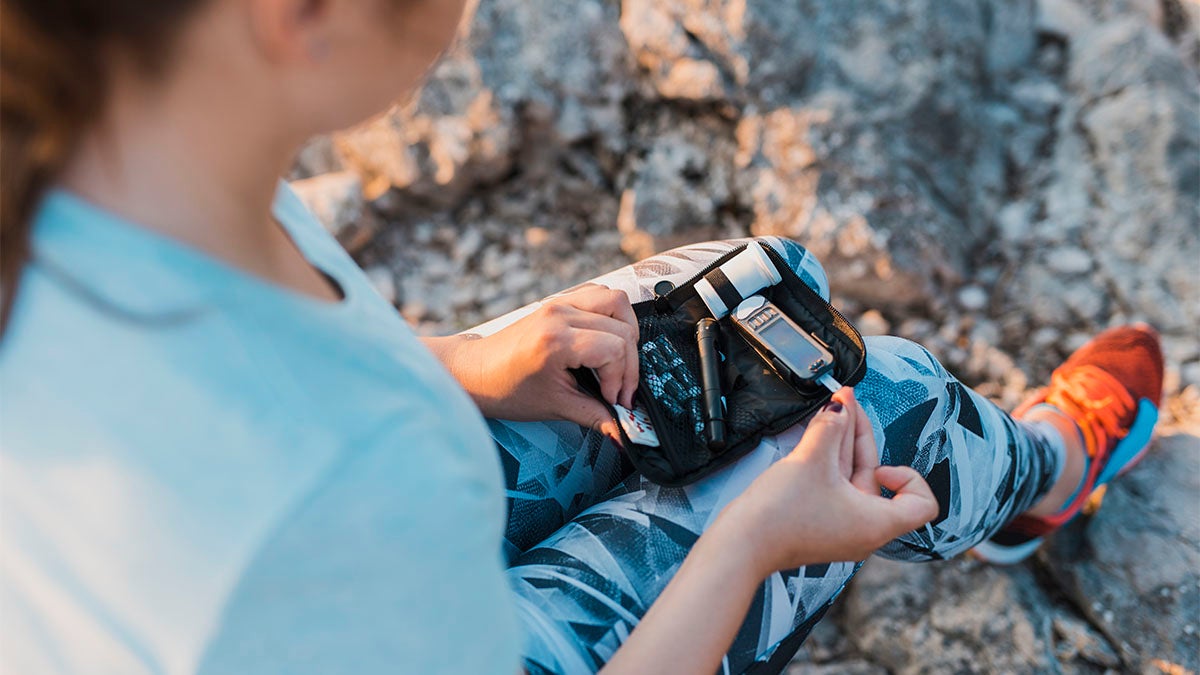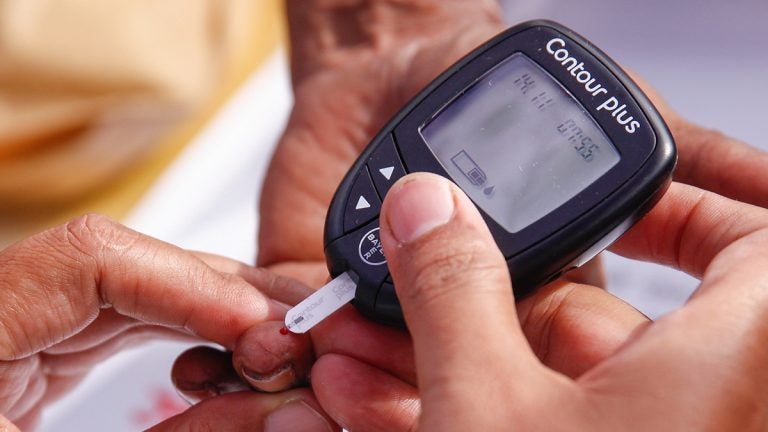Diabetic Athletes Need To Take Extra Precautions When Training
Diabetes is a common disease in society, and athletes are not immune. Scott Crabtree, a senior baseball player at the University of New Orleans, is one of those athletes.
“It definitely challenges you,” Crabtree said. “I’ll have days where I’ll be in the workout room. We’ll be lifting weights, and my blood sugar crashes. People don't understand all the time that I have to sit down for a few minutes and eat a snack or drink some Gatorade and relax for about 5-10 minutes, let that blood sugar start to rise back up before I can get back into it.”
While not all people understand, his teammates do.
“It's insane, honestly,” said Crabtree's teammate Zach Thompson. “My body hurts all the time because we do so much. We're out here all day every day and with his diabetes and he's sweating and having to constantly put insulin in and constantly have a certain snack because it goes up and down so much from being out in the sun and running all day. It's just crazy that he can do it."
More than 100 million people are living with diabetes in the United States. An estimated 415 million people worldwide are afflicted — 1 in 11 of the world’s adult population. Of that total, 46 percent are undiagnosed.
The story of Crabtree’s journey with diabetes has resonated well beyond his close circle. He is a global ambassador for Juvenile Diabetes Research Foundation and mentors kids with diabetes. He uses his story to show them how to manage the disease and live an active life.
“To have something like that," UNO baseball coach Blake Dean said, "that he can share with other people and overcome, it sets him up for the rest of his life because he knows how to deal with adversity.”
“It's good for everyone to see that Division I athletes do have this,” UNO baseball trainer Tyler Trahan said. “Professional athletes do have this. It’s good to know that there is a way to still compete at a high level.”
Athletes around the world are forced to deal with this disease in their daily life as well as their career in athletics.
There are two major types of the disease. In Type 1 diabetes, the body stops producing insulin, a hormone that enables the body to use glucose found in foods for energy. People with Type 1 diabetes must take daily insulin injections to survive. This form of diabetes usually develops in children or young adults, but can occur at any age.
Type 2 diabetes results when the body doesn’t produce enough insulin or is unable to use insulin properly. This form of diabetes usually occurs in people who are over 40, overweight and have a family history of diabetes, although today it is increasingly occurring in younger people, particularly adolescents.
“In our profession, you’re supposed to be tough… I thought it was something I would just bounce back from,” former NFL quarterback Jay Cutler said as he explained the process many people go through when first diagnosed with diabetes, especially those expected to be “tough” and healthy for work like professional athletes.
Today, Cutler is comfortable discussing the emotional side of diabetes as well as the physical challenges.
“Sometimes, I take pride in it; sometimes, I feel bad for myself. There’s a whole range of emotions you go through.”
Cutler revealed the challenges of being a diabetic pro athlete in a series of videos.
Hypoglycemia is one of the symptoms most often related to diabetes. This condition is caused from having a blood sugar level too low to keep a body energized. Being aware of the signs and symptoms of hypoglycemia and being prepared is important. Sometimes it’s easy to think extreme sweat or light-headedness is a result of playing hard. However, this could be a sign of low blood sugar. Other symptoms of hypoglycemia are weakness/fatigue, shaking, headache, irritability, confusion, dizziness, hunger and impaired vision.
Some tips and strategies to help diabetics control blood sugar levels and perform at peak levels:
- Blood glucose levels should be closely monitored before exercise.
- Do not start exercise with low blood sugars (below 70). Have a snack first.
- Do not exercise if your blood sugars are 300 or above. Be sure to check for
Ketones (when your cells don’t get enough glucose, your body burns fats instead thus producing ketones) in your urine if blood sugars are 240 or higher. Do not exercise if ketones are present. - A carbohydrate-based meal or snack is recommended one to three hours before exercising.
- Always carry some form of carbohydrates with you, such as hard candy, dried fruits (raisins), fresh fruits, granola bars or crackers.
- Be sure to let the coach and/or teammates know you are diabetic and what the signs/symptoms of hypoglycemia are, so that they can help if the state occurs.
- Users of insulin should talk to their doctor about adjusting dosage to account for exercise. Most of the time, having a snack before exercise will suffice.
- Plan to snack during the activity if it lasts longer than one hour.
- For daylong events, eat six small meals containing both carbohydrates and protein. (Avoid high-sugar, high-fat foods.)
- Eat after the event to prevent hypoglycemia and to rebuild glycogen stores. Hypoglycemia can occur four to 48 hours after exercise, so it is important to monitor blood glucose levels frequently and eat balanced meals and snacks.
- As always, drink lots of water to prevent dehydration.
Today, medicine and health researchers are making advancements in treatment, management and prevention for diabetes. Apps such as Fooducate and Glooko help people log their sugar and food intake. Newer advances in blood sugar devices allow people to test their levels and get results within minutes. More people and athletes are using smart pumps such as the Continuous Glucose monitoring (CGM) device that sticks to the skin and monitors blood glucose throughout the day. Some devices can be set to auto mode to control insulin levels.
“The FDA is dedicated to making technologies available that can improve the quality of life for those with chronic diseases – especially those that require day-to-day maintenance and ongoing attention,” said Jeffrey Shuren, director of the FDA’s Center for Devices and Radiological Health, in an announcement from the FDA. “This first-of-its-kind technology can provide people with Type 1 diabetes greater freedom to live their lives without having to consistently and manually monitor baseline glucose levels and administer insulin.”
While more people are diagnosed with diabetes each year, advances in technology and medicine help find more ways for people to seek medical help and control of the disease.
Other athletes and sports figures with diabetes
Walt Arnold (former football player, Kansas City Chiefs)
Bill Carlson (Ironman triathlete)
Bobby Clark (former hockey player, Philadelphia Flyers)
Jay Cutler (former quarterback, multiple teams)
James “Buster” Douglas (professional boxer)
Mike Echols (cornerback, Tennessee Titans)
Darren Eliot (former hockey player, L.A. Kings)
Pamela Fernandes (Olympic gold medal cyclist)
Curt Fraser (former hockey player, Minnesota North Stars)
Kris Freeman (Olympic skier, silver medalist)
Rich Gedman (baseball player, Boston Red Sox)
Bill Gullickson (former pitcher, Houston Astros)
Gary Hall, Jr. (Olympic swimmer/gold medalist)
Jonathan Hayes (former football player, K.C. Chiefs)
Chuck Heidenrich (professional skier)
Jason Johnson (pitcher, Baltimore Orioles)
Billie Jean King (tennis legend)
Ed Kranepool (former baseball player, NY Mets)
Kelli Kuehne (LPGA two-time champion)
Jay Leeuwenburg (guard/center in NFL)
Mark Lyle (professional golfer)
Gary Mabbutt (UK soccer champion)
Adrian Marples (Ironman triathlete)
Michelle McGann (LPGA)
Corbin Mills (bike racer)
Adam Morrison (pro basketball player, LA Lakers)
Calvin Muhammad (former football player, Washington Football Team)
Freddie Patek (former baseball player, K.C. Royals)
Steve Redgrave (Olympic rowing gold medalist)
Dan Reichert (pitcher, Kansas City Royals)
Art Shell (former football player, Oakland Raiders)
Mike Sinclair (former NFL defensive end)
Sherri Turner (pro golfer)
Jerry Ujdur (former baseball player, Detroit Tigers)
Scott Verplank (pro golfer)
Jo Ann Washam (pro golfer)
Dustin Paré is a journalism student at Arizona State University
Editor’s note: For the coming 2019-2020 academic year, the Global Sport Institute’s research theme will be “Sport and the body.” The Institute will conduct and fund research and host events that will explore a myriad of topics related to the body.



